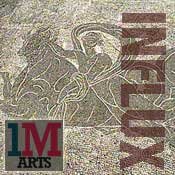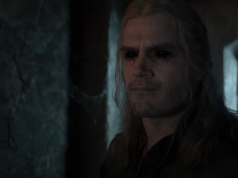Master Artist and Showman Robert Rauschenberg Wows at Palm Springs Art Museum
The acclaimed and important American artist Robert Rauschenberg (1925 – 2008) was a true Renaissance man, well-versed in all the important media of the 20th century. He was an important painter, printmaker, and sculptor, with his noted “combines;” however, he was also a master draftsman, film maker, performance artist, choreographer, theater designer and photographer (a sizeable number of prints in the exhibition use the artist’s own photographs of Los Angeles, a city he came to love). The show at the Palm Springs Museum of Art, titled “Rauschenberg at Gemini” and running until July 28, 2013, limits the focus to Rauschenberg’s output at the world-famous Los Angeles multiples/prints workshop.
Gemini G.E.L. was organized in 1966 and is still run by two of its founders, Sidney Felsen and Stanley Grinstein. Over a 35-year span, Rauschenberg produced more than 250 different prints at Gemini. Rauschenberg’s artistic output at Gemini was historic and highly influential, breaking the barriers of traditional printmaking per se. He transformed the definition of a “print” multiple in a multitude of ways. First, he broke the traditional confines of size and scale in printmaking. Rauschenberg made the largest prints known at the time, an example of which is in the Palm Springs exhibition. Second, he redefined the dimensions of fine art prints. Traditionally, fine prints were limited to two dimension printed on paper. Rauschenberg was an iconoclast in every way, making print multiples in three dimensions and printing on wood, cloth, metal, glass, gossamer, plastic, and thereby blurring the boundaries of traditional sculpture and printmaking. Third, he broke with tradition with respect to the multiple qualities of fine art prints, varying the degrees of variations from one print run to another within a single edition. Lastly, with his highly provocative output at Gemini, Rauschenberg forever changed how the viewer interacts with the print multiple, whereby each viewing and each setting was a different art experience. Certainly, no other artist has ever pushed the boundaries of what “printmaking” could be as much as Rauschenberg.
But then again, the show at Palm Springs really is about two “artists:” Rauschenberg and Gemini. To make these innovations and explorations possible, a very special art environment was required. To match — and make manifest — the cognitive and imaginative brilliance of Rauschenberg, a print workshop with the equipment, know-how, and technical facilities was required. Also mandatory was an unwavering desire to facilitate the artist’s vision combined with the willingness to take risks as large as those of the artist. Gemini rose to the occasion. From 1967 to 2001, a sense of exciting collaboration and unwavering trust was forged between the artist and his printshop. And the world of prints would never be the same.
The iconic works featured in the exhibitions span decades and represent major milestones in the history of prints and print making. The prints in the Palm Springs show highlight not only Rauschenberg’s sheer innovation and iconic artistic expression, they are a testament to the artist’s dedication to the world in which he lived and worked before his death in 2008.
Rauschenberg’s most noted multiples and print series are included in the exhibition: “Booster,” the artist’s X-ray self-portrait and his first print at Gemini; the “Stoned Moon” series, based on the American Apollo Moon exploration program; the handmade paper series of the 1970s; the three-dimensional editions titled “PUBLICONS”; the “Sling-Shots Lit” series; the “Borealis Shares” series; and the innovative “Cardbird” series and “Cardbird Door.” As Rauschenberg is famously known to say, “that other artist made the ceiling, so I made the door and window.”
Not only was Rauschenberg an important visual artist, he was a humanist and a cultural ambassador. Prints made with the assistance of Gemini staff in France, India, and China — as well as several series inspired by his travels in connection with the internationally groundbreaking “Rauschenberg Overseas Cultural Interchange (ROCI)” — are included in the show. And let us not forget that the artist often made prints for political or environmental causes. His lithograph for the first Earth Day in 1970 is included, as well as prints for former vice-presidential candidate Geraldine Ferraro.
“Rauschenberg at Gemini” is at the Annenberg Wing of the Palm Springs Art Museum from 03/16/13 to 07/28/13. Be sure to experience Rauschenberg in the desert; it is an unforgettable experience.
Grade: A+
For more information you can go here.
Review by Armin Callo






